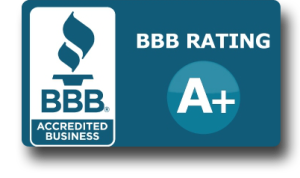Reverse Mortgage Concepts That Are Often Misunderstood
Calling “penalties” on potential issues of misunderstanding that can arise between loan officers and borrowers in reverse mortgage transactions, Dan Hultquist, VP of organizational development and Jim McMinn, lead sales trainer of learning and development at Finance of America Reverse (FAR) used their time presenting at the National Reverse Mortgage Lenders Association (NRMLA) Annual Meeting in Nashville, Tenn. to call out several aspects of a reverse mortgage loan that can suffer from some communication errors.
Having already called out issues related to language and specifics regarding the line of credit growth, how to be careful when describing a reverse mortgage as “tax-free” and how a loan’s balance can actually be reduced when partial prepayments are made, the pair capped off their presentation by citing four additional topics that can often be misunderstood at some point in the reverse mortgage process.
Fixed rate reverse mortgages-In a hypothetical scenario in which a loan officer talks to a potential client about a fixed rate Home Equity Conversion Mortgage (HECM), the LO informs the client about a fixed rate HECM that would cap the loan’s proceeds to 60% of the principal limit, which the LO believes would leave the other 40% “on the table.” This is when Hultquist and McMinn called out the misconception.
“Until maybe a year or two ago, just about every loan originator had that explanation,” Hultquist says. Some originators have either offered the idea that the fixed rate HECM is a closed end loan that would disallow someone from accessing additional funds later on, or encouraged a borrower to get into a more flexible, adjustable rate mortgage (ARM).
“In our hypothetical situation, our borrower has no pre-existing mortgage so is going to be locked into that 60%,” McMinn explains. “He also does not want an adjustable rate because he is rate sensitive. So, how do we accomplish his goal? There’s a little trick out there called a voluntarily elected Life Expectancy Set Aside (LESA).”
The idea is that a LESA is a mandatory obligation, and would leave little to no money behind if this borrower would put that in place, McMinn says. It could potentially be a good fit for a borrower who has a few specific attributes, including being rate-risk sensitive; having a desire for comfort and security; and having a desire to extinguish an existing mortgage while also having no interest in future draws.
That being said, fixed rate loans only account for roughly 2-3% of industry volume, Hultquist says, since people are getting far more money due to favorable SWAP rate conditions.
“But when that changes, we can absolutely sell this if that’s what [the borrowers] want,” he says.
The Life Expectancy Set Aside (LESA)-On the broader topic of the LESA itself, there are a number of misconceptions that can get presented to borrowers concerning how it works.
“Something that I’d like to impress upon everyone is that a LESA is not a negative thing,” McMinn says. “It may be in the borrower’s best interest to have the comfort and security of having that LESA available to pay their property charges, but there are some other things [that can be misconstrued.”
One such aspect of the LESA that can be miscommunicated to a borrower is an idea that it is guaranteed throughout the life of the loan, which is not the case. If the money in the LESA runs out, the borrower becomes responsible, McMinn says.
“Servicing is going to send out a notice 30 days prior to let them know that it’s about to run out,” McMinn says. “If they have a line of credit then it can be taken out of there, but otherwise, the borrower will become responsible for paying those charges in a timely manner.”
Some loan officers discuss a LESA with borrowers in terms of acting similarly to an escrow account, where funds are managed and disbursed by a third party. The problem, though, is that there is a big difference between an escrow account and a set aside, McMinn and Hultquist say. Cited regulations during the presentation from HUD even say that mortgagees must ensure that for a fully-funded LESA, funds are not held in an escrow account.
In the event of an exhausted LESA, the mortgagee will have to use any available money in the principal limit to pay any outstanding property charges in full, then charge the borrower’s account.
Non-borrowing spouse protections-Issues related to non-borrowing spouses (NBS) on reverse mortgage transactions have consistently served as a thorn in the side of the industry for years, but misconceptions still abound even after a number of protections for NBS have been put into place over the past several years.
One such misconception highlighted by Hultquist and McMinn is illustrated by the pair in a hypothetical scenario, where a loan officer tells an NBS that a widow’s “reverse mortgage will still be there, and guarantees that [she] can remain in [her] home until another maturity event occurs.”
“I think she does [have something to worry about],” Hultquist explains. “It’s been five years since we rolled out non-borrowing spouse guidelines, and we can’t say some of those definitive statements. There’s a lot of caveats when it comes to non-borrowing spouses.”
One such caveat is a misperception that any non-borrowing spouse will have 90 days following the death or exit from the home of a spouse to obtain title to the property, or some other legal right to remain in it for the rest of the NBS’ life. Such a requirement does not apply universally in every NBS situation, Hultquist says.
“Those are for pre-August 4, 2014 loans,” he says. “So, if you’re selling a loan today, you need to tell them that they do have a 90-day requirement, at least for now. That might change, but that 90-day requirement is still enforced for new loans.”
If a borrower misses that window, however, they will not qualify for an NBS deferral, Hultquist says. One way to avoid this issue altogether is to leave the NBS on the home’s title at the time the loan is originated, since they can now be mortgagors. It can, however, remain very difficult for a grieving spouse to drop everything they may be doing to then try and probate a will, or find other relevant documentation that illustrates ownership or right to remain in the home.
Additionally, the only maturity event that is covered for the 90-day deferral period for NBS is death of the borrowing spouse, and does not include the borrower leaving the home for 12 consecutive months due to mental or physical incapacity, Hultquist adds.
The nonrecourse feature of reverse mortgages-The final point of discussion rested on a proper definition of the nonrecourse feature that serves as protection for borrowers if their home is underwater, where the balance owed exceeds the value of the property they are borrowing against.
“We like to say that the nonrecourse feature provides broad protection,” Hultquist says. “But, it actually opens up a much broader discussion about the definition of the nonrecourse feature. While most of us would probably agree that a good definition of the nonrecourse feature is that [a borrower] can never owe more than the value of the home, that’s not actually true.”
Constructing a hypothetical scenario in which a 75-year old borrower who has had their reverse mortgage for the past 13 years, this borrower’s loan is upside down. He comes into some money due to the death of his spouse and a payout of life insurance proceeds, and decides to apply those proceeds to pay off his reverse mortgage. At that point, in order to pay it off, he would owe the entire amount of his loan.
“[At that point, this borrower] owed more than the value of the property,” Hultquist explains. “That leads us to a couple more appropriate definitions of the nonrecourse feature.”
The nonrecourse feature can be more accurately defined by saying that the borrower can’t owe more than the value of the home at the time it is sold, or that the home stands alone for the debt, he says. If the borrower cannot pay for the debt, the lender will sell the home and the borrower or the estate will have no judgment or recourse against them.
If the borrower wants to sell the home before the loan becomes due and payable, the option to only owe 95% of the home’s value or the loan balance – whichever is cheaper – does not actually kick in until the loan becomes due and payable. So, the so-called “95% option” would not be available to a borrower seeking to sell the home at any point prior to the time it becomes due and payable, he says.
If the heirs wish to keep the home, and there is no post-death transfer or conveyance of title, then the full loan balance is owed, Hultquist explains.
“We’ve seen this happen,” he says. “So, be very, very careful advising your clients how to hold title. If you’re going to put [a client’s children] on title either prior to or after closing, they might be risking some money if they decide to keep the home.”
By Chris Clow and Glenn Carstens-Peters. Brought to you by Scott Underwood and Reverse Mortgage South- Serving all of Alabama, Mississippi, Tennessee, and Georgia.











Leave a Reply